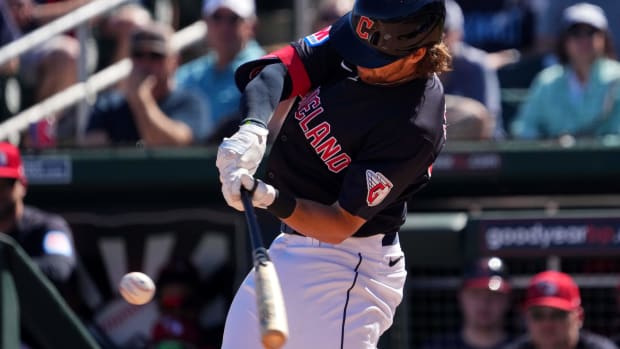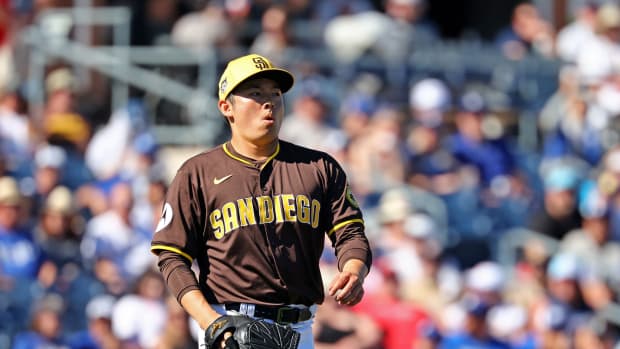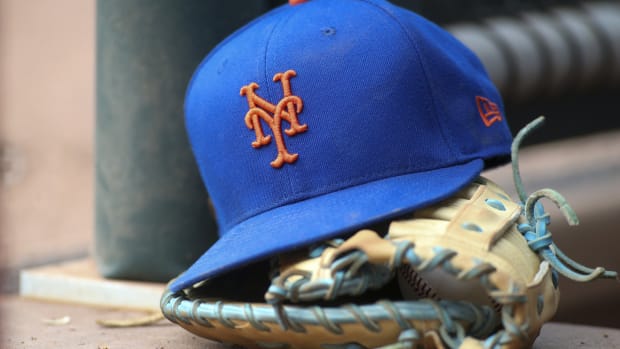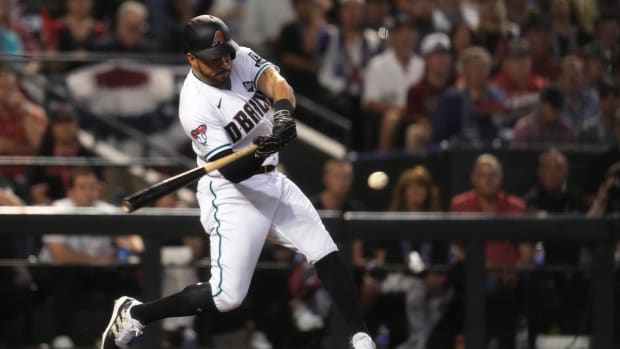Watch: Yet another reminder that home plate collisions need to be banned
The home-plate collision you can see above took place Wednesday night in the first game of the Eastern League semifinals (Double-A) between the Erie SeaWolves and the Harrisburg Senators. SeaWolves second baseman Brandon Douglas, who scored on the play, absolutely bulldozes Senators catcher Brian Jeroloman, who suffered a gash on his chin, was taken to the hospital for treatment and tests and will miss the remainder of the series. Douglas suffered no injuries. As bad as it looked, it could have been worse. Still, it shouldn't have been allowed.
Simply put, a runner should not be allowed to intentionally strike a fielder in possession of the ball in a manner intended to dislodge the ball. It's true that the official definition of a catch in the major league rule book states, "It is not a catch . . . if simultaneously or immediately following his contact with the ball, [the fielder] collides with a player . . . and as a result of such collision or falling, drops the ball." I don't necessarily think that wording needs to be changed. I do, however, think that if the contact is intentional on the part of the runner, and on a play like the one above it's easy to discern intention, then the runner should be called out automatically.
It amazes me that collisions like the one above are allowed at home plate. If a runner plowed into a fielder in that way at any other base, there would be nearly universal outrage. If a runner makes an excessive attempt to take out a fielder on a potential double play, not only is he called out, but so is the batter running to first base. Yet a runner can plow over a catcher with no regard for the location of home plate and still be credited with a run if he hits him hard enough to jar the ball loose.
That's madness.
I don't care if the catcher is a career minor leaguer like Jeroloman or a superstar like Buster Posey -- the Giants' franchise player who missed most of the 2011 season after being leveled on a play at the plate -- he should be protected from such assaults. Runners who intentionally steamroll catchers like Douglas did on Wednesday should not only be out, they should be suspended, as they would be for any other excessive on-field violence.
I'd also like to see umpires be more strict about determining when a catcher is "in the act of fielding the ball," a loophole in the obstruction rule that has widened considerably on plays at home plate. A catcher should not be allowed to intentionally set up in the baseline in such a manner as to block all of home plate from the runner unless he has the ball or is very literally in the act of fielding it. That means that catchers can't set up there and wait for a throw. They would have to set up either fully in fair or foul territory, only moving into the baseline if forced to by the throw. Enforcing that rule properly would give runners at least some part of the plate at which to aim when they are barreling down the line, making their target the plate, not the catcher.
VERDUCCI: What it will take to change the dumbest rule in baseball
The intent of baseball's rules on interference and obstruction is simple and logical. The runner has the right of way in the baseline unless the fielder has the ball or is in the act of fielding the ball. If the game adheres to that basic premise, the runner has no right to initiate a collision with a fielder that is in possession of the ball and must make an effort to avoid a fielder who is attempting to field the ball. The fielder, meanwhile, must give the runner the baseline until he has the ball or is in the act of fielding it. That makes perfect sense to me, and if baseball clarifies its rules to that effect and enforces them equally at all four bases, hopefully ugly scenes like the one above will soon be a thing of the past.


































